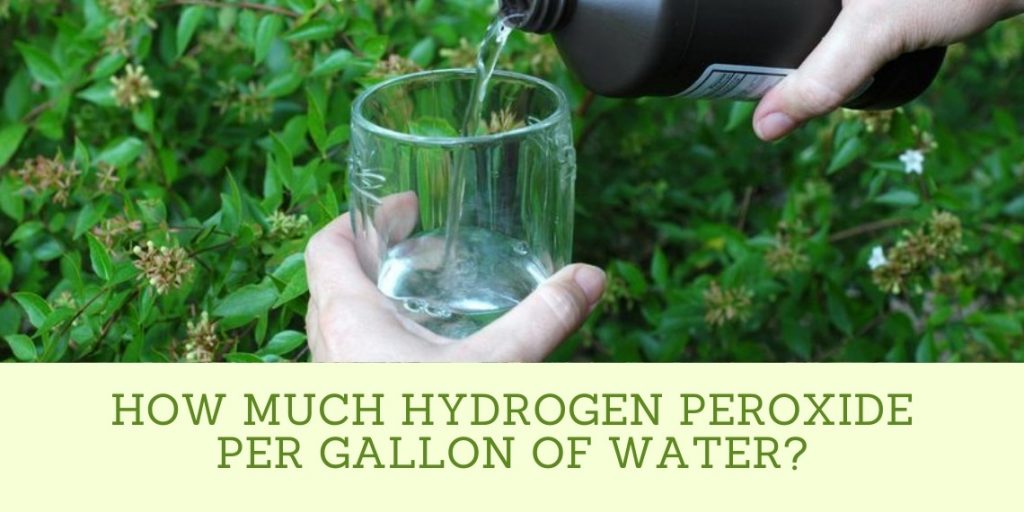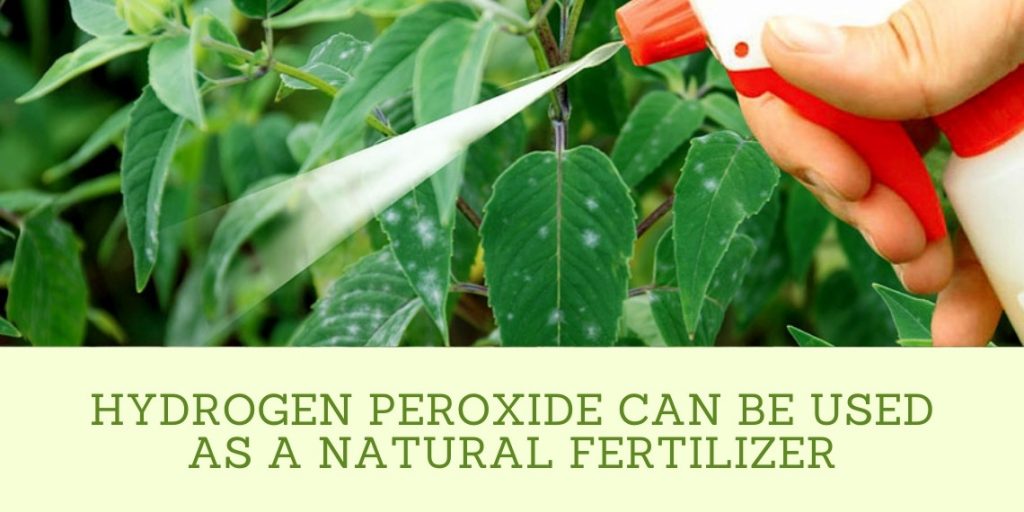Plants are amazing things; they give us food and oxygen to breathe. They can also help purify the air by absorbing carbon dioxide. However, over 90% of plants will get sick at some point in their life, so it’s important to know how to treat them when they get ill.
Hydrogen Peroxide is an amazing product to use on plants. It is a natural disinfectant and can be used to help prevent disease in plants, as well as helping to treat them if they are already infected.
Hydrogen Peroxide can also be used around the home to clean and disinfect surfaces. This makes it a great all-around cleaner for the garden and the home.
How to Use Hydrogen Peroxide
Hydrogen peroxide is often sold as a 3% solution in the grocery store, but it can be used much more effectively when combined with other substances to increase its potency. This is called “stabilized” hydrogen peroxide.
Stabilized hydrogen peroxide can be purchased online and is often sold as a wound disinfectant. When using stabilized hydrogen peroxide, the first thing you’ll need to know is how much of it to apply.
The label will usually give some guidance on this. Most products recommend mixing 1 part hydrogen peroxide with 9 parts water to make a 3% solution.
So, for example:
To make a gallon of 3% hydrogen peroxide:
Mix 1 cup (8oz) of hydrogen peroxide with 9 cups (64oz) of water in a clean jug or jar. Shake well and pour into a spray bottle(s). The mixture will remain good for up to 6 months.
To make a quart of 3% hydrogen peroxide:
Mix 1/4 cup (4oz) of hydrogen peroxide with 7/4 cups (32oz) of water in a clean jug or jar. Shake well and pour into a spray bottle(s). The mixture will remain good for up to 6 months.
Note that the 3% solution is the only one that should be used on plants, but you can mix up to 10 times this concentration for other uses.
It takes very little hydrogen peroxide to drench a plant, so be careful not to overdo it. Depending on the size of your plants and how much you’re drenching them, use about 1/2 cup to 1 cup of 3% hydrogen peroxide for each plant.
If you find yourself overusing hydrogen peroxide, mix it with an equal amount of water and use this instead. The solution won’t be as strong, but it will still help your plants and be less likely to harm them.
How Much Hydrogen Peroxide Per Gallon of Water?

Hydrogen Peroxide is one of the most versatile substances you can find in your home. Everyone has it, but many don’t know what to do with it.
Here’s an easy way to remember how much Hydrogen Peroxide you need per gallon of water for different purposes. It is much easier than trying to calculate each time.
- 1 tablespoon of hydrogen peroxide to 1 gallon of water for drinking purposes.
- 2 tablespoons of hydrogen peroxide to 1 gallon of water for cleaning/disinfecting purposes.
- 3 tablespoons of hydrogen peroxide to 1 gallon of water for weed control purposes.
- 4 tablespoons of hydrogen peroxide to 1 gallon of water for pest control purposes.
Hydrogen Peroxide is a great product to have on hand, and it’s also very inexpensive. You can find bottles of the stuff at your local pharmacy or grocery store for just over $1 per bottle.
For some purposes, you might need larger quantities. For instance, for weed control purposes, you might need somewhere between 30 and 50 gallons of solution per 1,000 square feet of the garden bed.
If you need to use it for more than one purpose, the best way to get the maximum value for your money is to buy it by the gallon at your local pool supply store.
Most of these stores carry not only regular H2O2 but also 35% Food Grade H2O2. The 35% is a much stronger solution and can be used for more heavy-duty purposes. However, it will cost you a little bit more per ounce than the household strength hydrogen peroxide.
Regardless of whether you choose to go with food grade or household strength, it’s good to see your options. This way, you can make an informed decision about what’s best for you and your needs.
Uses of Hydrogen Peroxide for Your Plants and Garden
Hydrogen peroxide can be used to clean and disinfect plants and garden beds. It has a long history of use in the garden, and it is one of the best natural remedies for getting rid of plant diseases.
Hydrogen peroxide can be used to kill bacteria on your plants, stop fungal infections from spreading, and prevent root rot. It is also a natural pesticide that will effectively take care of any pests in or around your garden.
Horticultural Uses for Hydrogen Peroxide
Hydrogen peroxide has many uses for gardening and horticulture, but its use as a very effective bactericide is best known by gardeners.
While hydrogen peroxide is best known for its use as a topical bleaching agent, it also has many uses for gardening and horticulture. Hydrogen peroxide can be used to control plant diseases by disinfecting the leaves of plants.
However, the most common application is to use hydrogen peroxide to sterilize pruning equipment. Hydrogen peroxide can help eradicate some very serious diseases such as gray mold and fire blight.
Hydrogen Peroxide Kills Bacteria
If you add two tablespoons of 3% hydrogen peroxide to a gallon of water, it will disinfect the leaves of your plants without destroying beneficial microorganisms in the soil or on plant surfaces.
It is still important to use proper pruning techniques to prevent wound infections. But hydrogen peroxide will ensure that any bacteria or viruses on the blades of your pruners do not spread to other plants.
Hydrogen Peroxide Prevents Frost Damage
If you are expecting a frost in the middle of winter, there is no need to rush out and cover all the plants in your yard. Just mix one tablespoon of 3% hydrogen peroxide into a gallon of water. Then spray the entire plant to prevent frost damage and leave it uncovered.
It is not necessary for the plant to be completely dry before you apply the hydrogen peroxide, but you should avoid spraying any blossoms with the solution.
Hydrogen Peroxide Kills Mold and Mildew
You can use 3% hydrogen peroxide to effectively prevent gray mold and spot-on black roses, but it will work on any kind of fungus that causes plant disease.
Just mix one tablespoon of 3% hydrogen peroxide into a gallon of water and apply the solution with a sprayer to your plants two or three times during the growing season.
Hydrogen Peroxide Kills Insects and Slugs
If you have an infestation of slugs or aphids on your plants, there is no need to resort to the use of harsh pesticides that will harm beneficial insects and pollinators in your garden.
You can remove most bugs and pests from your plants with a spray made from 3% hydrogen peroxide and water.
Hydrogen Peroxide Can Be Used as A Natural Fertilizer

You can use 5% hydrogen peroxide to fertilize your plants, but it is not recommended that you spray all of your plants with it. You should test a small area first before you apply the solution more widely, as some plants can be very sensitive to hydrogen peroxide.
You should also avoid spraying new seedlings, as the solution will kill any beneficial fungi that are living on the surface of the soil.
There are many applications for hydrogen peroxide in horticulture, but it is best used as a spray to clean pruning equipment and disinfect plant surfaces. It can be used to control plant diseases, prevent frost damage, kill mold and mildew, eliminate slugs and aphids, and fertilize plants.
However, hydrogen peroxide is extremely strong, so you should not use it on all plants or in large amounts. Test a small area of the plant before you apply the solution more widely, as some plants may be very sensitive to it.
In Conclusion
Hydrogen Peroxide is a great way to help your plants and garden grow. It is an all-natural mineral that helps add oxygen to the soil, which in turn helps the plant’s roots uptake nutrients better.
Hydrogen peroxide can also be used as a foliar spray on plants to help them resist disease and pests. By using hydrogen peroxide for your plants, you are helping create a healthy environment for them to thrive in.


